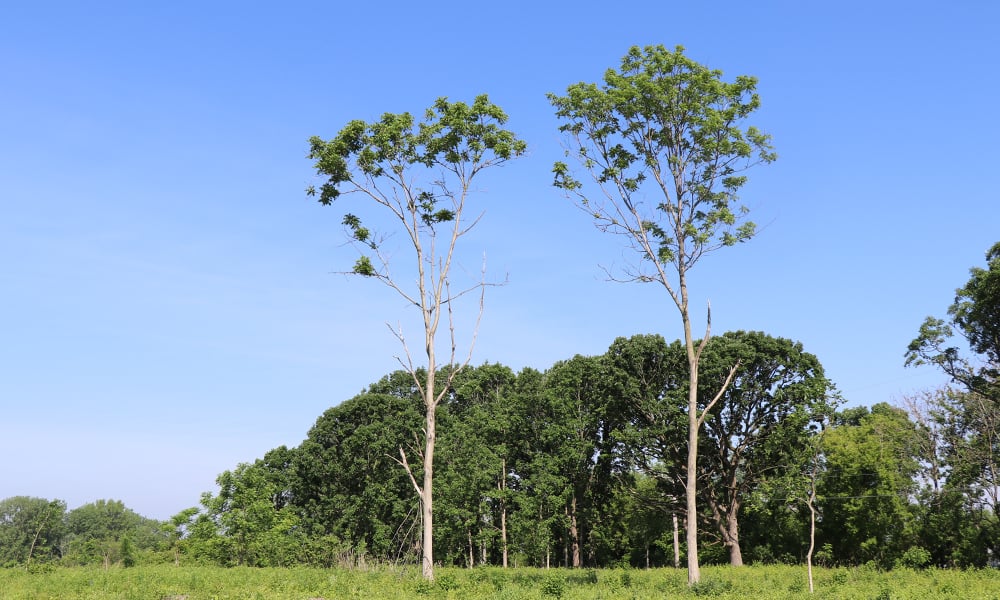
The 358-acre West Chicago Prairie Forest Preserve in West Chicago is one of northeastern Illinois’ premier natural areas, containing more than 600 species of native plants and animals. Not only is the prairie a diverse habitat containing high-quality natural resources but it's also designated a state nature preserve, giving it the greatest protection against the threats of development and improper use. Small footpaths provide visitors the unique opportunity to take leisurely walks to enjoy the prairie’s rare ecosystem, and the preserve is void of picnic tables, large fishing lakes and limestone multipurpose trails to secure the great diversity of its native plants and animals.
The West Chicago Prairie Stewardship Group helps the Forest Preserve District manage the prairie and its natural resources. Its volunteers contribute significantly throughout the year by removing invasive woody vegetation, eliminating exotic weeds, collecting seeds from native grasses and forbs, and sowing the seeds at restored areas. The stewardship group volunteered nearly 85 days (just under 990 hours) each year at the prairie. Much of this work is accomplished during organized volunteer workdays attended by its members and others from the community.
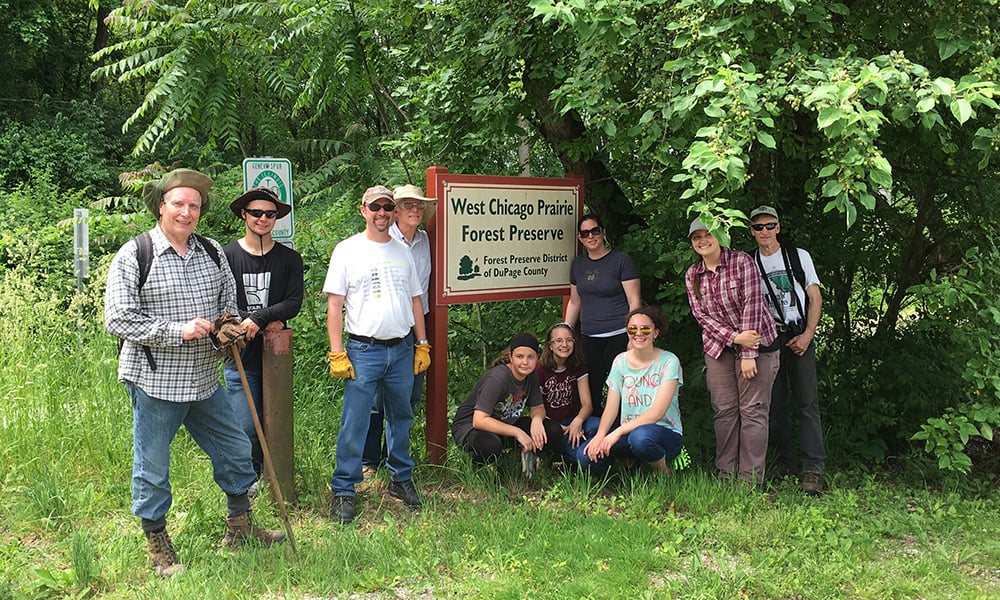
West Chicago Prairie Stewardship Group
In 2018 the Forest Preserve District hastened a plan to restore a 6-acre area at West Chicago Prairie that had long been deemed a high priority for restoration. The lack of fire over the past half century allowed undesirable woody species including box elder, black cherry, silver maple and others to grow and dominate the area. And although much of the prairie is managed by the West Chicago Prairie Stewardship Group, this area was too overgrown with second-growth trees and invasive species for volunteers to tackle. The Forest Preserve District instead proposed hiring an ecological contractor to remove the trees and other invasives and seed with native species collected from the surrounding prairie. The area would then become one that could be managed by the stewardship group during its volunteer workdays and slowly recover.
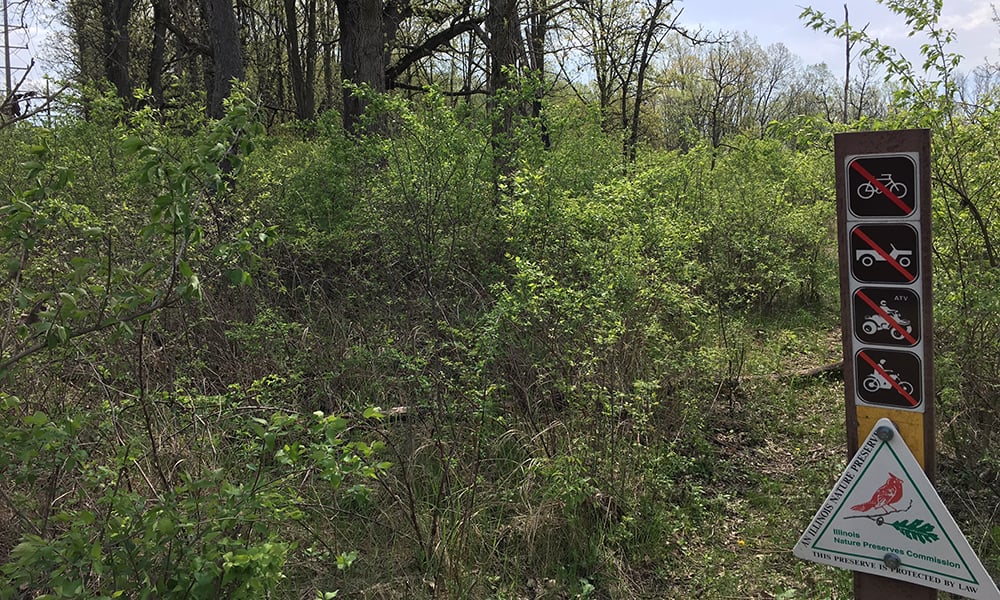 Before: The area was overgrown with invasive woody vegetation, including buckthorn and honeysuckle.
Before: The area was overgrown with invasive woody vegetation, including buckthorn and honeysuckle.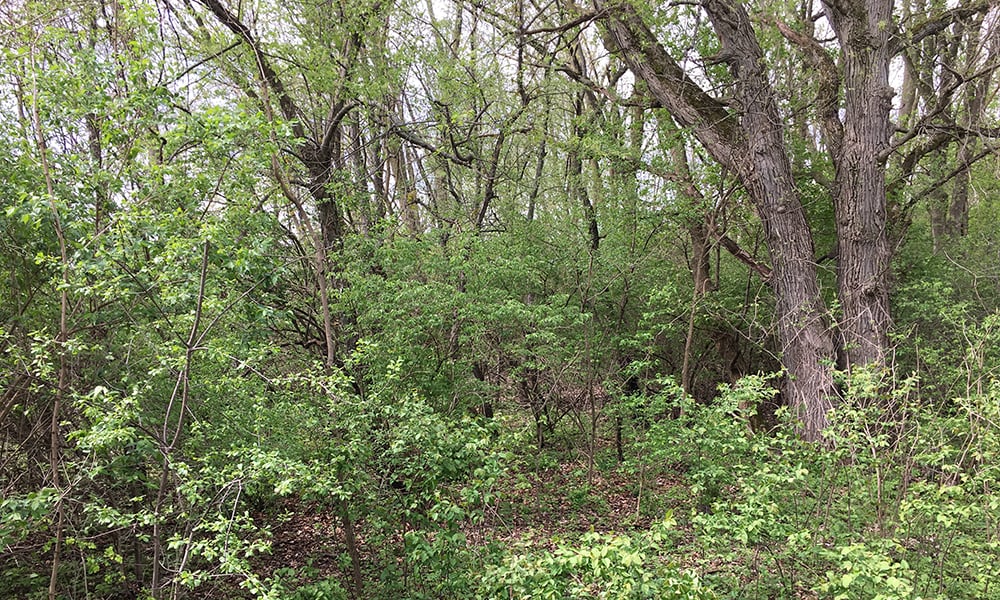 Before: A second generation of nonnative trees grew in some areas.
Before: A second generation of nonnative trees grew in some areas.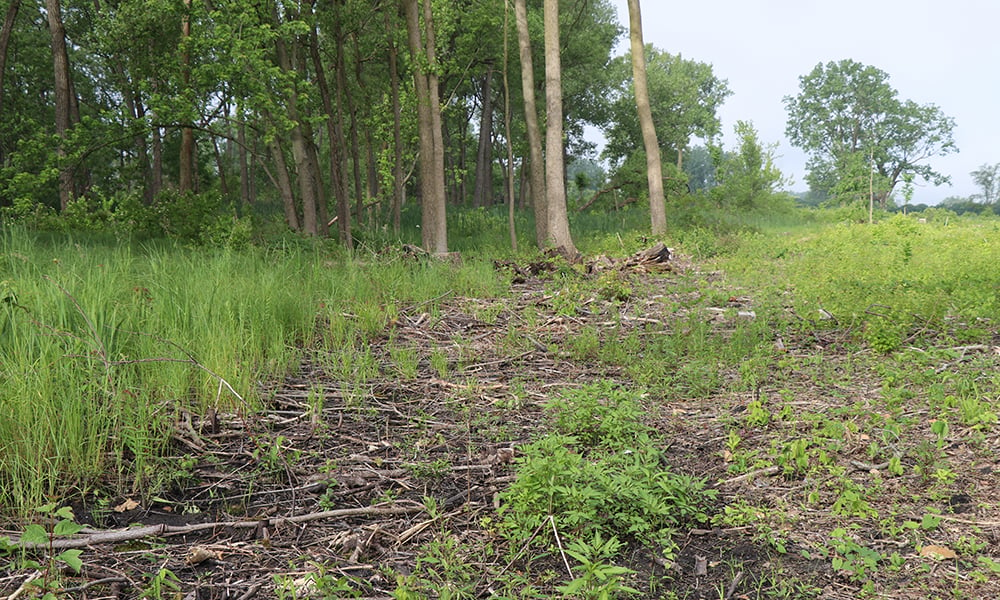 After: The prairie will come back with native grasses and forbs in this area of the prairie, which can already been seen.
After: The prairie will come back with native grasses and forbs in this area of the prairie, which can already been seen. 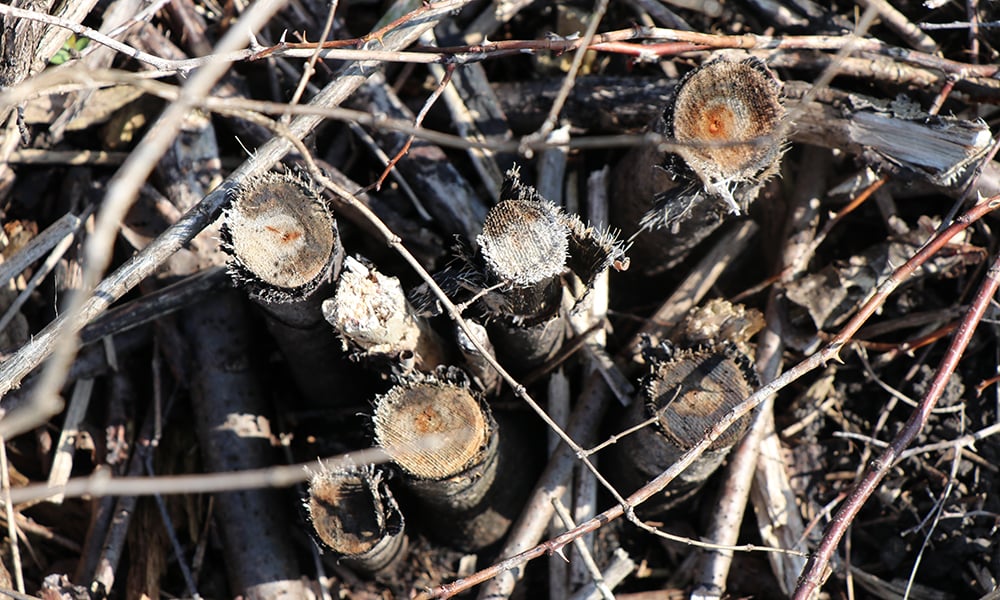 After: Nonnative woody species are treated with herbicides.
After: Nonnative woody species are treated with herbicides.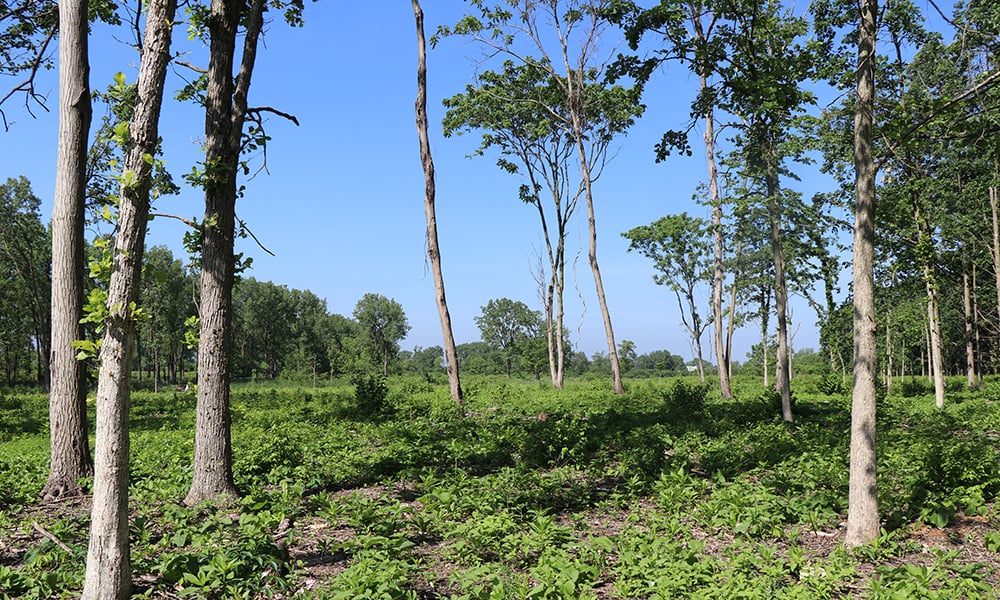 After: The removal of invasive woody vegetation opened up the community to sunlight.
After: The removal of invasive woody vegetation opened up the community to sunlight.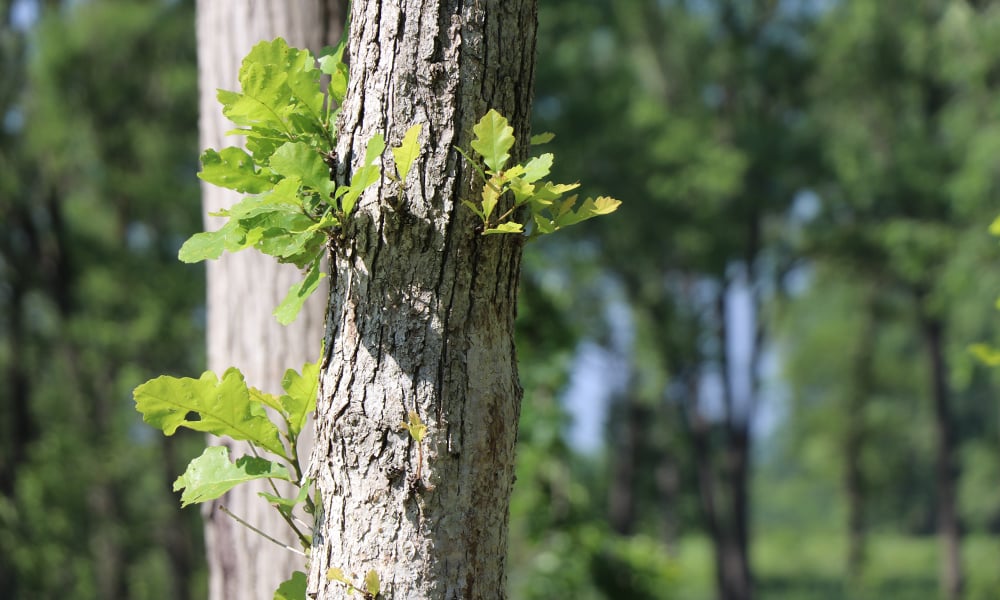
After: Some of the oak trees are regenerating from sunlight exposure.
The nonprofit 501(c)(3) Friends of the Forest Preserve District received a Community Stewardship Challenge Grant from the Illinois Clean Energy Community Foundation to restore the habitat at West Chicago Prairie. For every dollar the Friends raised, the ICECF donated $3 up to $21,000. The foundation also then contributed an additional $4,000, because it expects volunteers to log 400 hours before October 2019 at West Chicago Prairie.
Today the habitat is well on its way to becoming healthier and more sustainable. The restoration of these acres in the larger West Chicago Prairie connects a formerly fragmented landscape, creates even greater habitat for wildlife and provides additional leisure opportunities— like watching wildlife, seeking blooming wildflowers and taking in beautiful vistas — for visitors. 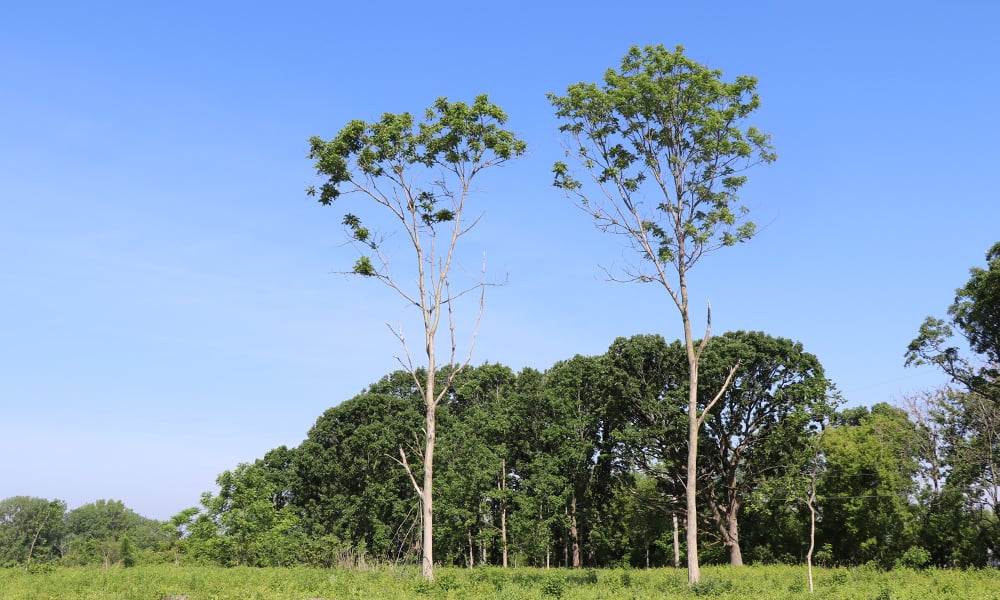 After: The butternut tree is quite uncommon in DuPage forest preserves, but it grows at the area known as Mac Queen Savanna at this prairie. It is slow grows only one foot each year ranging between until it reaches maturity, ranging between 40 to 60 feet.
After: The butternut tree is quite uncommon in DuPage forest preserves, but it grows at the area known as Mac Queen Savanna at this prairie. It is slow grows only one foot each year ranging between until it reaches maturity, ranging between 40 to 60 feet.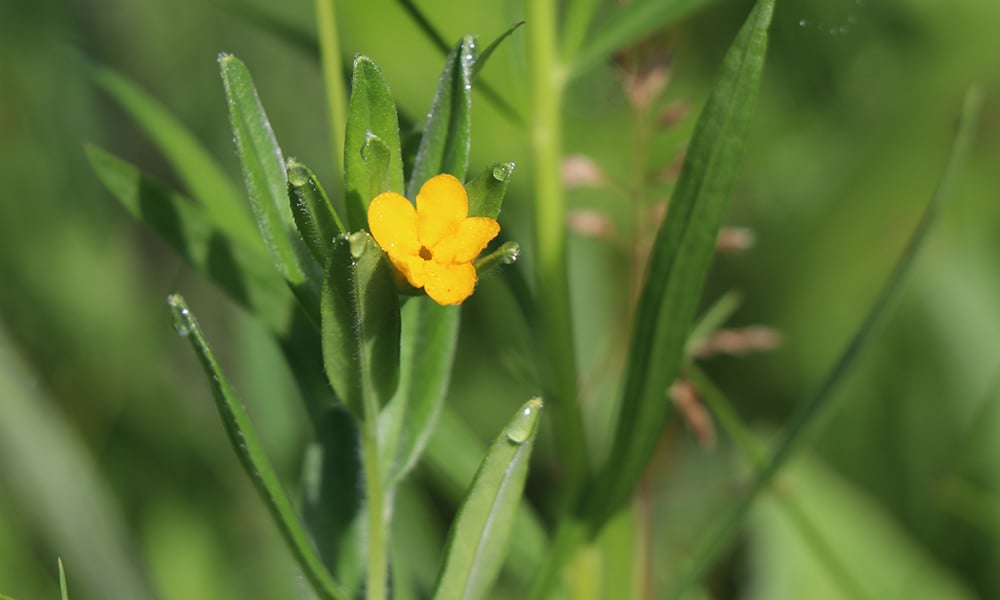
After: The hoary puccoon is often an occasional, rare or absent plant in Illinois’ prairies but it’s already coming back due to restoration efforts at West Chicago Prairie.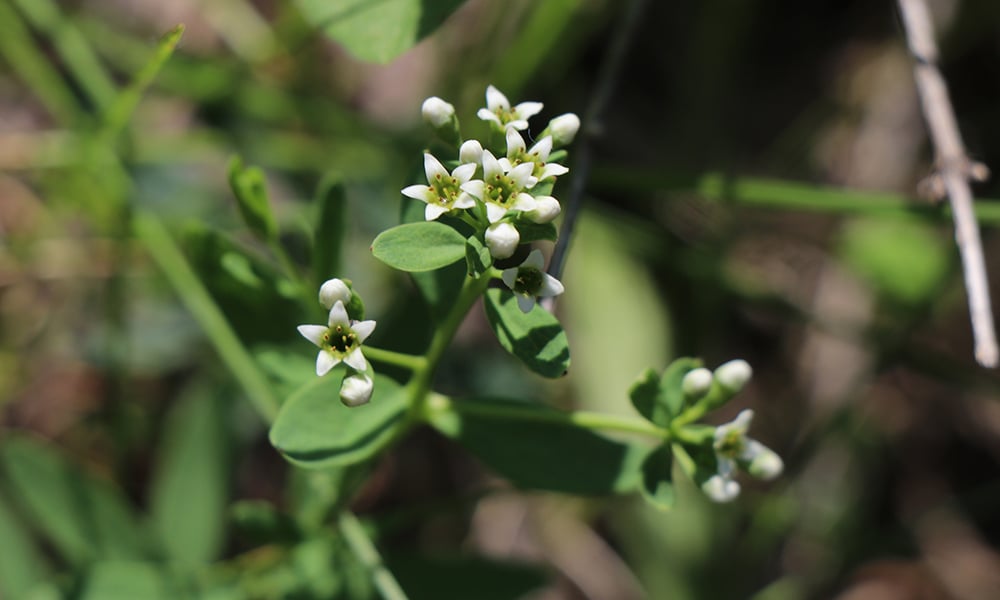
After: Bastard toadflax is particular to high-quality prairies, and its populations will increase with prescribed burns.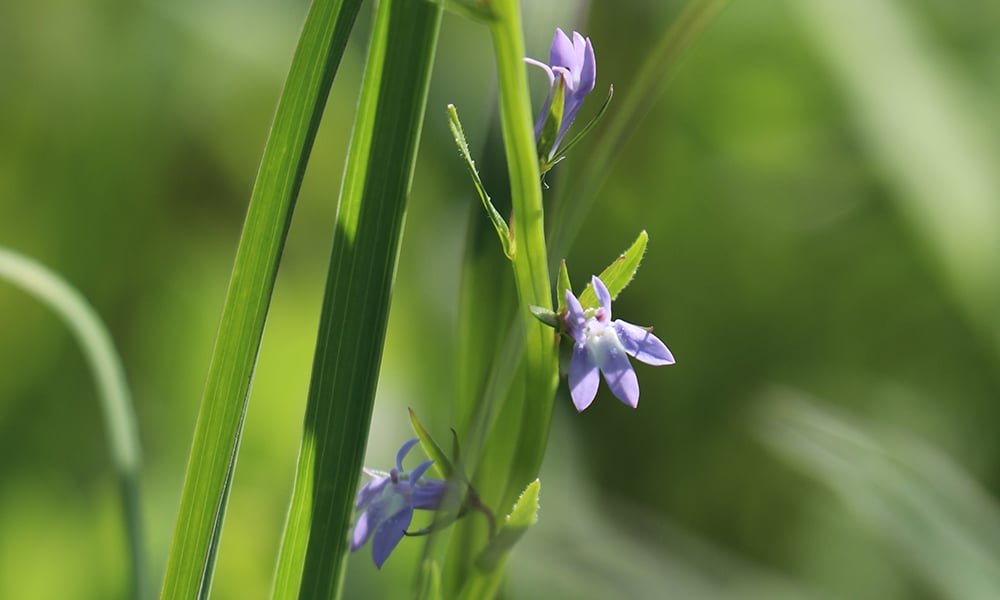
After: The pale-spiked lobelia grows in the prairie’s understory among taller forbs.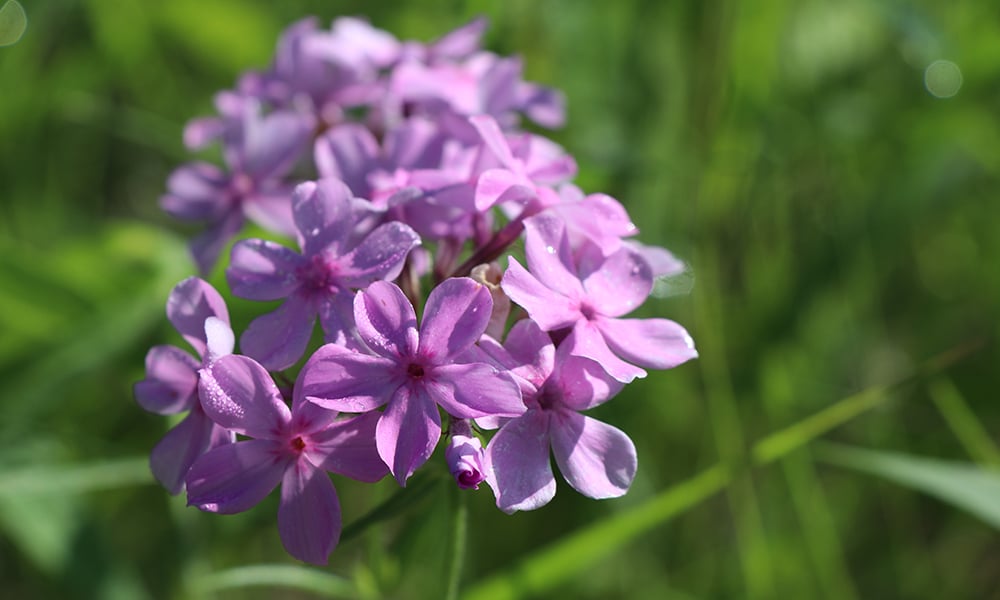
After: The pale-spiked lobelia grows in the prairie’s understory among taller forbs.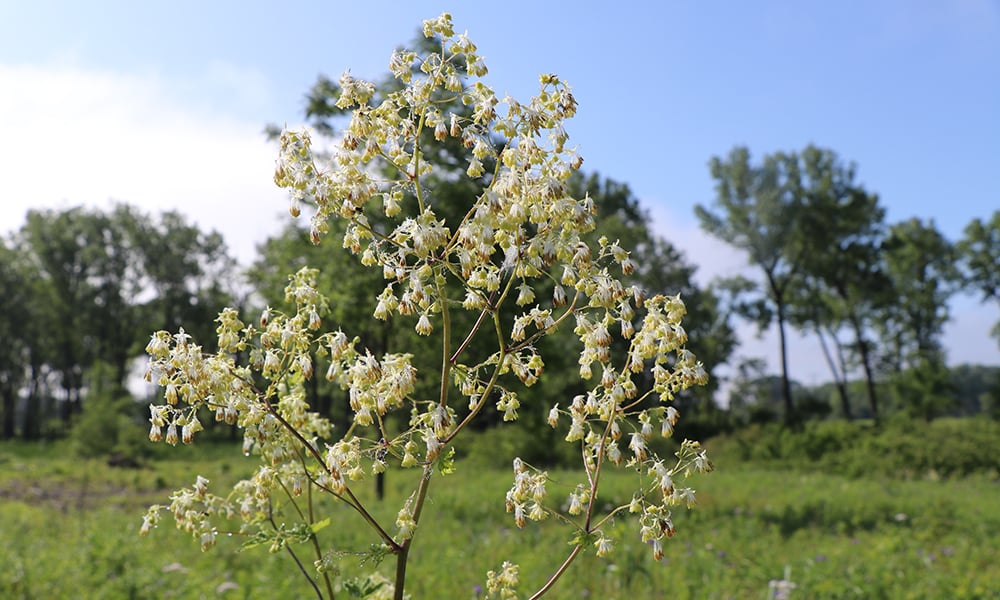
After: Purple meadow rue's stems are purple, thus its name. Its showy white flowers bloom in June and July.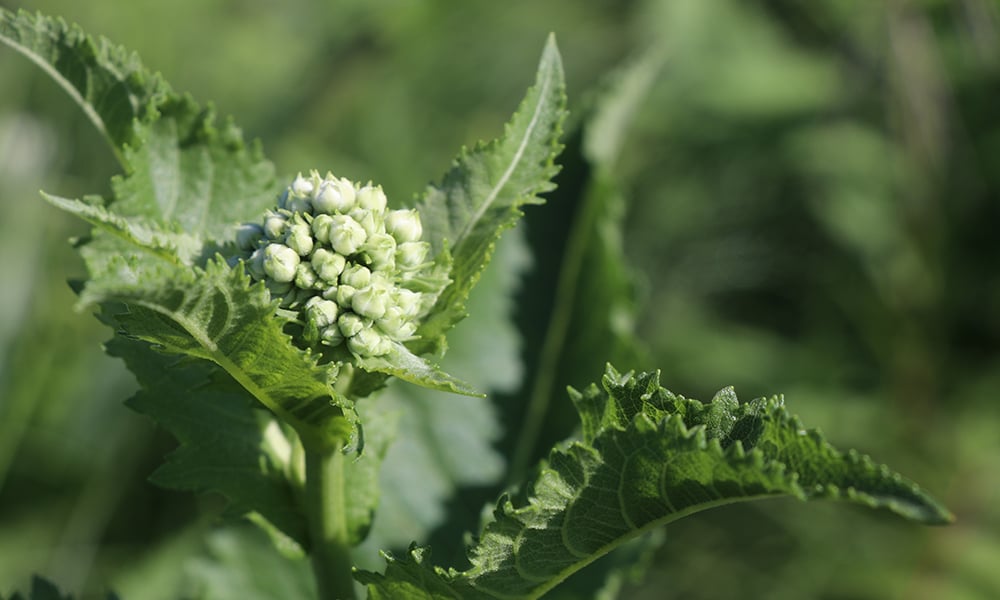
After: Wild quinine's leaves are large and sandpaper-like.